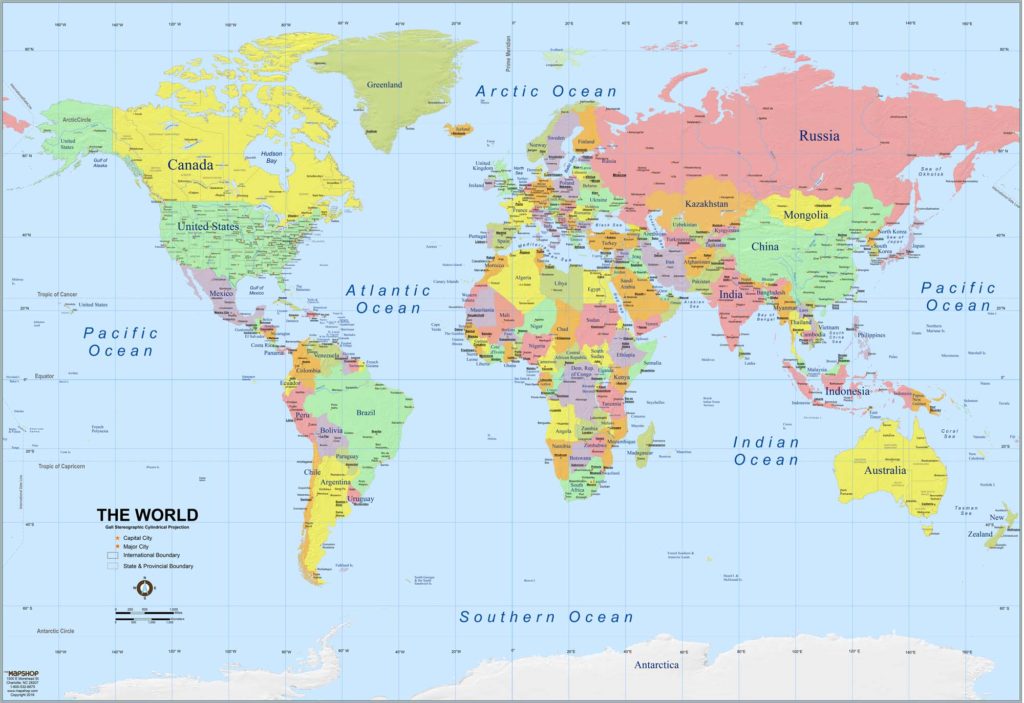Table of Contents
AROUND THE WORLD
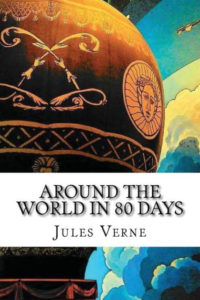 |
In Jules Verne’s classic Around the World in 80 Days, first published in 1872, Phileas Fogg and his French valet Passepartout set out on a whirlwind circumnavigation of the world on a bet. The book is available in many editions, including versions from Great Illustrated Classics (1989) and Classic Starts (2007) with simplified texts for ages 7-9, and graphic novel adaptations. (Follow the action on the map!) The 1956 movie version, rated G, stars David Niven as Phileas Fogg. |
|
Phileas Fogg wasn’t the only one. In 1889, intrepid American journalist Nellie Bly made a round-the-world trip in an attempt to beat Mr. Fogg’s record – which she did, finishing the journey in just 72 days. From the Smithsonian, read about Nellie Bly’s Record-Breaking Trip. |
|
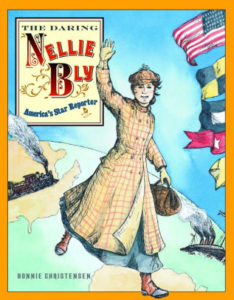 |
Bonnie Christensen’s The Daring Nellie Bly (Dragonfly Books, 2009) is a picture-book biography of the remarkable reporter who infiltrated a New York insane asylum, rounded the world in 72 days, and covered the front lines during World War I. For ages 5-9. |
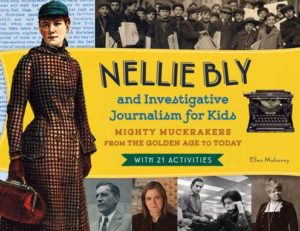 |
By Ellen Mahoney, Nellie Bly and Investigative Journalism for Kids (Chicago Review Press, 2015) covers the life and times of Nellie Bly, who introduced a form of journalism that came to be known as “muckraking” – investigations that exposed social, political, and economic problems. (Nellie, for example, faked insanity in order to report on the horrific conditions in American mental asylums.) The book includes a timeline, period photos and prints, capsule biographies, and 21 hands-on activities. For ages 9-14. |
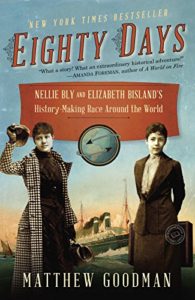 |
Matthew Goodman’s Eighty Days (Ballantine Books, 2014) is the story of Nellie Bly’s record-breaking race around the world in 1889. Though she didn’t know it at the time, she was also racing against a rival journalist, Elizabeth Bisland. An exciting read for teens and adults. |
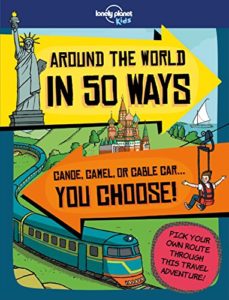 |
From Lonely Planet Kids, Around the World in 50 Ways (2018) is a geography version of a choose-your-own adventure book as kids travel the world choosing their own routes and means of transportation, from sleds to steamboats to hot-air balloons. For ages 9-12. |
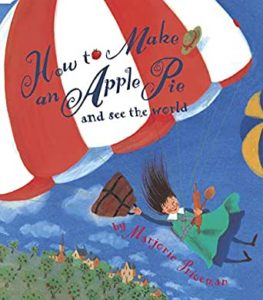 |
In Marjorie Priceman’s How to Make an Apple Pie and See the World (Dragonfly, 1996), a would-be baker travels the globe collecting the ingredients for an apple pie – to Italy for flour, France for eggs, England for milk, Sri Lanka for cinnamon. Pie recipe included. For ages 3-7. In the same format, see How to Make a Cherry Pie and See the U.S.A. (2013). |
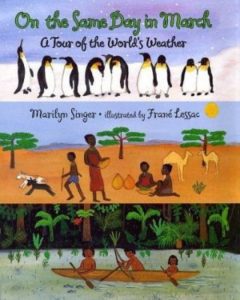 |
By Marilyn Singer, On the Same Day in March (HarperFestival, 2001) is a round-the-world tour of the world’s weather. On the same day in March it’s icy cold in the Arctic, sunny in Barbadoes, windy in Australia. For ages 4-8. |
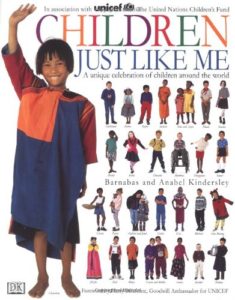 |
Dorling Kindersley’s Children Just Like Me (2016), illustrated with wonderful color photos, highlights the lives of kids from 36 different countries around the world. For ages 7-11. |
 |
By Jamie Aramini, Eat Your Way Around the World (Geography Matters, 2008) has dozens of kid-friendly recipes, categorized by continent and country. Appropriate for a range of ages. |
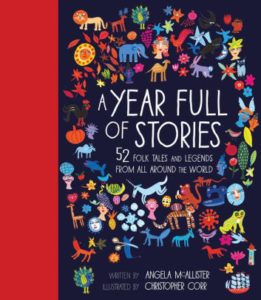 |
Read your way around the world! Angela McAllister’s A Year Full of Stories (Frances Lincoln Books, 2016), with wonderful illustrations by Christopher Corr, is a collection of 52 stories from around the world, grouped by month. January, for example, features “Father Frost” from Russia, “The Magic Porridge Pot” from Germany, and “King of the Forest” from China. For ages 8-12. |
 |
The ultimate family field trip. John Higham’s 360 Degrees Longitude (Prospecta Press, 2012) is the story of how he, his wife, and their two kids, ages eight and eleven, spent a year traveling the world, crossing 24 time zones and visiting 28 countries. For teens and adults. |
GEOGRAPHY AND ART
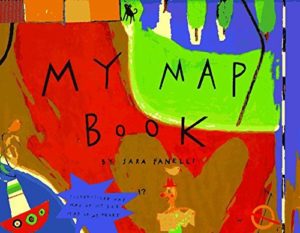 |
Sara Fanelli’s imaginative My Map Book (HarperCollins, 2019), illustrated with wonderful abstract mixed-media artwork, shows that maps can be used in many creative ways – to make a “Map of My Family,” for example, or a map of my day, heart, dog, and tummy. Wonderful project possibilities. For ages 4-8. |
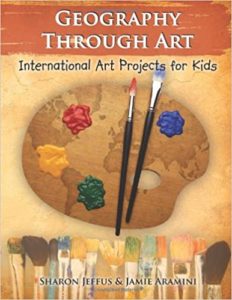 |
By Sharon Jeffus and Jamie Aramini, Geography Through Art (Geography Matters, 2008) is a great collection of international art projects, categorized by continent and country, along with background information and supplemental resource lists. Sample projects include everything from a papier-mache globe and a Pangaea puzzle to Ghanan kente cloth, Japanese fish prints, Brazilian rainsticks, and much more. Adaptable for a wide range of ages. |
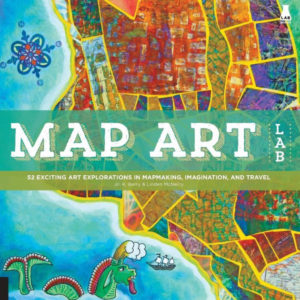 |
By Jill K. Berry and Linden McNeilly, Map Art Lab (Quarry Books, 2014) is a collection of 52 creative and artistic map-related activities, categorized under Map Basics, Map Magic, Flat Maps, Mixed Media Maps, Personal Maps, Cartographic Projects, and Inspired by Artists. For all ages. |
POETRY AND GEOGRAPHY
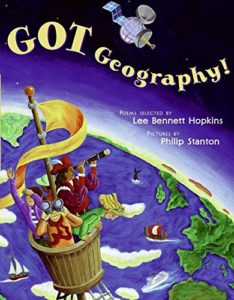 |
Edited by Lee Bennett Hopkins, Got Geography! (Greenwillow, 2006) is an illustrated collection of 16 poems with geography themes: subjects include mapping the world, the equator, and the compass. For ages 7 and up. |
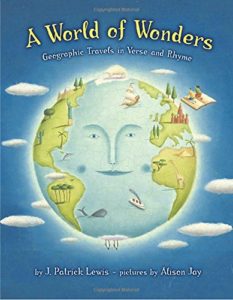 |
By J. Patrick Lewis, A World of Wonders (Dial, 2002) is an illustrated collection of 26 quirky geography and travel poems, filled with fascinating facts. Included are an acrostic poem about Columbus, a concrete poem called “The Italian Boot,” and “Is the Yellow Sea Yellow?” which begins “Is the Yellow Sea yellow?/Is the Red Sea red?/Is the Black Sea black?/Is the Dead Sea dead?” For ages 5-9. |
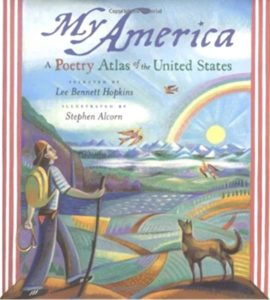 |
Compiled by Lee Bennett Hopkins, My America: A Poetry Atlas of the United States (Simon & Schuster, 2000) is a collection of 50 illustrated poems, grouped by geographical region, by such poets as Carl Sandburg, Langston Hughes, Gary Snyder, X.J. Kennedy, and many more. For ages 8 and up. |
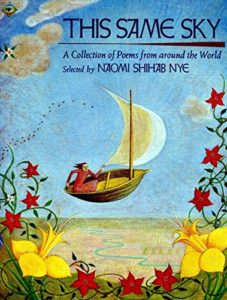 |
Selected by Naomi Shihab Nye, The Same Sky (Aladdin, 1996) is a collection of 125 poems from 68 different countries around the world. For ages 12 and up. |
|
See Elizabeth Bishop’s poem The Map. |
